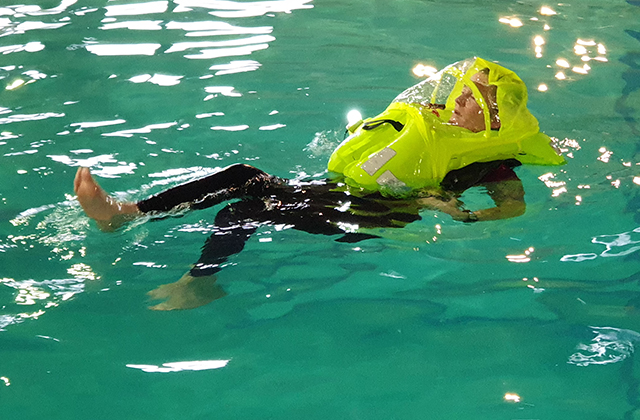This new Mustang Atlas 190 lifejacket is a wolf in sheep's clothing. I took one for a test run to try out this innovative new bladder design
I reviewed the Mustang Atlas 190 lifejacket and it’s raised the bar for bladder design

From the outside the casing looks pretty standard and dare I say it a bit bland. It doesn’t shout look at me, which might appeal more to a large section of the boating community who don’t want shouty lifejackets when they’re just wanting to quietly go about their boating day. Though I’m not against a shouty loud coloured lifejacket casing either. I tend to find myself reaching the more reserved looking lifejacket in my cupboard for everyday use. Anyway, I’m not a fashionista. I’m a sailor. The real business end of this lifejacket is the bladder but we’ll get to that in a moment.
The Atlas 190 has a smooth contoured shape to fit the body and once it’s on you can easily forget you’re wearing it. The back section is cut low and doesn’t impede on a collar or the back of your neck.
The weight is also distributed nicely across the whole body so there’s no hot spots. I tried this on over the top of a T-shirt and then later with a lightweight foul weather jacket and both options were comfortable. The quick adjust side buckles are a familiar premium feature and the tail end excess is dealt with neatly with velcro loops.
The closure buckle is a smart take on the metal double D, by using a small pull toggle it really makes unbuckling the lifejacket very easy, even I suspect with cold wet hands. The crotch strap is a standard form and fit and the manual activation toggle sits slightly exposed to the left hand lower side. For gnarly sailors I suspect this might be a snagging risk but for all other mortals it’s easy to locate without looking. So far, it’s looking like a decent premium lifejacket but nothing to set my world on fire, yet…

Where the lifejacket really shines though as I alluded to earlier is when it is deployed as an inflated bladder.
The shape is really unlike all other lifejackets currently available. The bladder at the front is more pointed or conical, with additional wave baffles built into it. This acts doubly to make waves pass around you and those that hit directly are baffled by the webs. There’s an additional little “pillow” to raise your head further still and this gives a feeling of really being raised out of the water. In the water I was able to scull backwards and maneuver really easily as there was plenty of room for arm articulation.
The onboard essentials, the top-up-tube and the whistle were very easy to locate and use and the lifting becket is held in a visible place by a Velcro tab and can be seen in the pool images as the black loop coming up between the bladders.
The sprayhood has a pram-style arch support which keeps it from collapsing on your head and keeps the plastic away from your face. It also makes it very easy to deploy and pull forward. Two loops pull down and go over each bladder end. As sprayhoods go this is one of the best I’ve ever used. As for the bladder and the position it placed me in the water, it’s hands down the best I’ve used.
They’ve thought about emergency beacon positioning too, though these were still being certified for use at the time of testing. There’s a dedicated area for a personal locator beacon or personal AIS beacon to attach to on the right-hand lower bladder section which is unencumbered by the sprayhood and allows the aerial a near vertical position which is optimum.
I strongly believe that all other lifejacket manufacturers are going to have to up their game in terms of bladder design. The Mustang Atlas 190 DLX has set the bar very high indeed.
There’s who models available, the basic Atlas 190 Pro Sensor which doesn’t have a sprayhood or light and then the Atlas 190 Pro Sensor DLX which comes with the hood and light. Both models come with the harness loop as standard.



